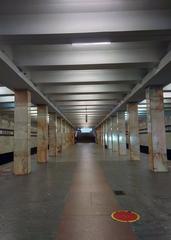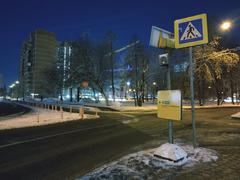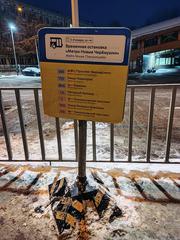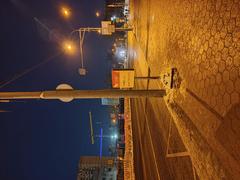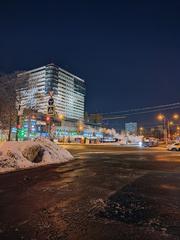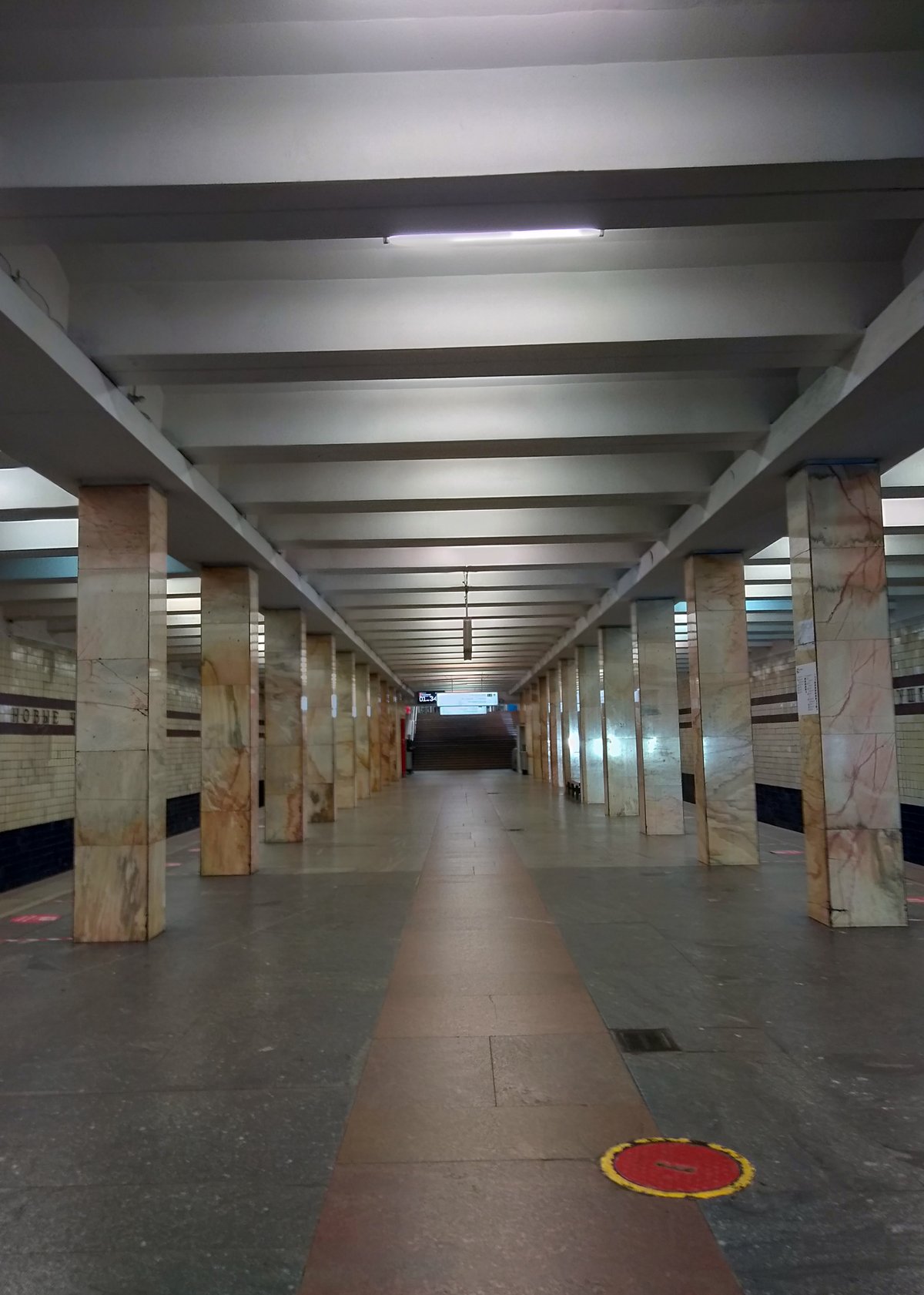
Novye Cheryomushki Visiting Hours, Tickets, and Moscow Historical Sites Guide
Date: 14/06/2025
Introduction to Novye Cheryomushki and Its Historical Significance
Situated in Moscow’s South-Western Administrative Okrug, Novye Cheryomushki exemplifies the Soviet-era drive for rapid urbanization and innovative housing solutions. Established in the mid-1950s to address the dire post-war housing shortage, it became the birthplace of the iconic “Khrushchyovka”—standardized, prefabricated apartment blocks named after Premier Nikita Khrushchev. These five-story buildings marked a stark shift from ornate Stalinist styles, championing speed, functionality, and improved living standards with features like indoor plumbing and central heating.
As one of Moscow’s first “mikrorayons” (microdistricts), Novye Cheryomushki was envisioned as a self-contained urban environment, integrating schools, shops, and communal spaces within a walkable layout. This approach reflected the Soviet ideal of collective, egalitarian city life. The neighborhood’s cultural resonance is notable; it inspired Dmitri Shostakovich’s 1959 comic operetta Moscow, Cheryomushki, a satirical take on Soviet housing bureaucracy that embedded the district in the city’s collective memory.
Today, Novye Cheryomushki presents a living tapestry of Moscow’s architectural evolution, where original Khrushchyovka buildings intermingle with modern high-rises. The district remains open to all, with no entrance fees or restricted hours, and is easily accessible by metro and surface transport. Its proximity to major parks and museums enhances its appeal for those eager to explore Soviet history, architecture, and vibrant community life (ArchDaily, Garage Museum of Contemporary Art).
Contents Overview
- Introduction & Historical Background
- Soviet Urban Planning: Birth of Novye Cheryomushki
- Architectural Innovations: The Khrushchyovka and Beyond
- Cultural Resonance & Artistic Representation
- Transformation and Preservation in the Post-Soviet Era
- Visiting Novye Cheryomushki: Practical Info
- Visiting Hours, Tickets, and Tours
- Accessibility and Safety
- Top Sights and Nearby Attractions
- Local Life: Parks, Markets, and Community
- Transportation and Navigation
- Practical Visitor Tips
- Frequently Asked Questions (FAQ)
- Conclusion
- Sources
Historical Development of Novye Cheryomushki
Soviet Urban Planning: The Birth of Novye Cheryomushki
Novye Cheryomushki—meaning “New Cherry Orchards”—arose from the Soviet Union’s housing revolution. In 1956, following Khrushchev’s 1955 decree to “Eliminate Excesses in Design and Construction,” development began in earnest. The Ninth Quarter of Novye Cheryomushki became the first experimental microrayon, embodying the Soviet vision of affordable, mass-produced housing. This model quickly spread across the USSR (ArchDaily, Garage Museum of Contemporary Art).
Architectural Innovations
The Khrushchyovka typifies Novye Cheryomushki’s built environment: five stories (to avoid the cost of elevators), efficient prefabricated construction, and compact yet modern amenities. These buildings signaled a major shift toward functionalism, with rapid construction—some quarters completed in just 22 months and at 30% less cost compared to previous models (ArchDaily). Later decades brought architectural experiments and higher-quality brick buildings, further diversifying the district’s appearance (HelloTravel).
Cultural Resonance & Artistic Representation
Novye Cheryomushki’s cultural impact is significant. Shostakovich’s operetta Moscow, Cheryomushki humorously celebrated the dream—and frustrations—of new Soviet housing (Wikipedia). The district frequently appears in Soviet literature and film as a symbol of postwar optimism and urban change.
Transformation and Preservation
After the Soviet era, many original Khrushchyovka blocks were replaced by high-rise towers, reflecting Moscow’s modernization. Efforts to preserve the district’s architectural heritage, such as the Ninth Quarter, have sparked debate over the value of Soviet-era ensembles versus traditional landmarks (ArchDaily). Today, the area remains a living archive of urban history.
Visiting Novye Cheryomushki: Practical Information
Visiting Hours and Tickets
Novye Cheryomushki is a residential district without formal visiting hours or entry fees. Public spaces, parks, and courtyards are accessible year-round, with daytime visits recommended for safety and comfort.
Guided Tours and Special Events
The Garage Museum of Contemporary Art and local operators offer walking tours focusing on the district’s urban history and architecture (Garage Museum of Contemporary Art). Check event calendars for community festivals, exhibitions, and open-air concerts.
Accessibility
The Novye Cheryomushki metro station (Kaluzhsko-Rizhskaya Line) is step-free, and most public spaces are pedestrian-friendly. Some parks feature inclusive playgrounds. While accessibility has improved, older infrastructure may present occasional obstacles (BravoPlanner, WeHeart.Moscow).
Safety
Novye Cheryomushki is considered safe, with a low crime rate and regular police presence. Follow standard urban precautions, particularly at night or in less busy areas (Travellers Worldwide).
Top Sights and Nearby Attractions
- Novye Cheryomushki Metro Station: A showcase of 1960s Soviet metro design (Wikipedia).
- Vorontsovsky Park and Palace: Historic estate with landscaped gardens, open daily, free entry.
- Cheryomushki Market: Vibrant food market open 8:00 AM–8:00 PM.
- State Darwin Museum: Natural history exhibits a short trip away.
- Gorky Park & Kolomenskoye Museum-Reserve: Major Moscow attractions easily reached by metro or bus (Touropia).
- Donskoy Monastery: A nearby religious site rich in history.
Local Life: Parks, Markets, and Community
Novye Cheryomushki’s parks and green courtyards invite relaxation and exploration. The area’s markets and shopping centers, such as Kaluzhsky Shopping Center, offer a taste of daily Moscow life. The Cheryomushki Cultural Center and local libraries provide exhibitions, performances, and workshops, fostering a vibrant community atmosphere. Orthodox churches, like the Church of the Intercession of the Holy Virgin (open 8:00 AM–8:00 PM), and seasonal festivities reveal the district’s cultural diversity.
Transportation and Navigation
- Metro: Novye Cheryomushki station (Line 6, orange line) operates from ~5:30 AM to after midnight, with direct connections to central Moscow. Trains are frequent and reliable (Rome2Rio).
- Buses/Trolleybuses: Extensive network, all accepting the Troika card (WeHeart.Moscow).
- Taxi: Ride-hailing apps (Yandex Taxi, Citymobil) are widely used and support English and card payments.
- Driving: Paid street parking is available, though congestion is common (HikersBay).
Practical Visitor Tips
- Payment: Use the Troika card for all public transport. Most cafes, shops, and markets accept cards and contactless payments.
- Language: Russian is primary; English is common in some service areas. Translation apps are useful.
- Weather: Visit in spring or early autumn for the best park experiences. Winters are cold and snowy.
- Safety: Standard precautions apply. The district is family-friendly and well-maintained.
- Accommodation: Nearby hotels and serviced apartments are available; book ahead in peak seasons.
Frequently Asked Questions (FAQ)
Q: Are there entrance fees or set visiting hours?
A: No, Novye Cheryomushki is an open residential area. Visit during daylight for the best experience.
Q: How do I get there?
A: Take the Moscow Metro (Line 6, orange) to Novye Cheryomushki station, or use local buses and taxis.
Q: Can I join a guided tour?
A: Yes, guided walking tours are available through the Garage Museum of Contemporary Art and local operators.
Q: Is the area accessible for people with disabilities?
A: Yes, though some older infrastructure may pose challenges. The metro station has step-free access and modern buses are wheelchair-friendly.
Q: What are the best photo spots?
A: Khrushchyovka buildings, Vorontsovsky Park, and Cheryomushki Market are particularly photogenic, especially in morning or late afternoon light.
Q: What local customs should I be aware of?
A: Dress modestly in churches, greet residents politely, and observe local etiquette in markets and parks.
Conclusion
Novye Cheryomushki stands as a testament to Moscow’s Soviet legacy and its dynamic urban transformation. Whether exploring Khrushchyovka architecture, wandering through parks, or engaging with the rhythm of local markets and events, visitors will find an authentic, welcoming side of Moscow distinct from the usual tourist routes. Use the Troika card for seamless travel, consider a guided tour for deeper context, and take time to enjoy the district’s unique blend of history, community, and modern living.
For ongoing travel tips, virtual tours, and updates on Moscow’s neighborhoods, download the Audiala app and follow us on social media. Start your journey to Novye Cheryomushki and experience a living archive of Moscow’s past and present.
Sources
- 100 Years of Mass Housing in Russia, ArchDaily
- Walks with Garage: Elimination of Excesses from Khrushchevkas to Residential Complexes, Novye Cheryomushki District, Garage MCA
- Tourist Attractions in Moscow, Touropia
- Moscow, Cheryomushki Operetta, Wikipedia
- Cheryomushki District Overview, HelloTravel
- Moscow.Info
- Is Moscow Safe to Visit?, Travellers Worldwide
- Kuda Shodit i Chem Zanyatsya s Rebenkom v Parke Sokolniki, BravoPlanner
- Novye Cheryomushki Metro Station, Wikipedia
- Moscow Metro and Public Transport Guide, WeHeart.Moscow
- Travelling to Russia in 2025, Just Go Russia
- Travel Information for Moscow, HikersBay
- Moscow Itinerary, The Broke Backpacker
- Fodor’s Moscow
- Things to Do in Moscow, Have Clothes Will Travel
- Novyye Cheremushki: Moscow’s Model Microdistrict, Medium
- Moscow Metro Travel Guide, Rome2Rio
